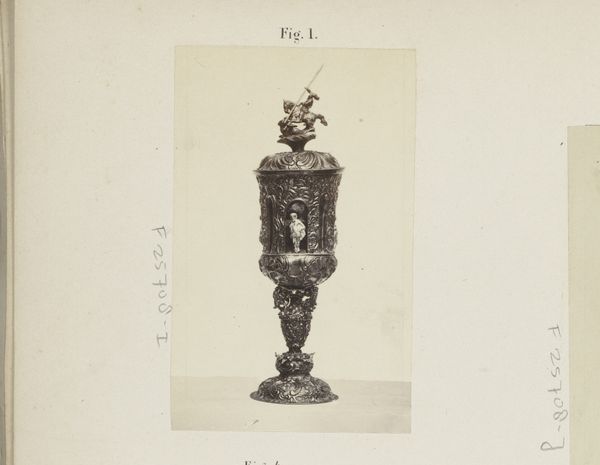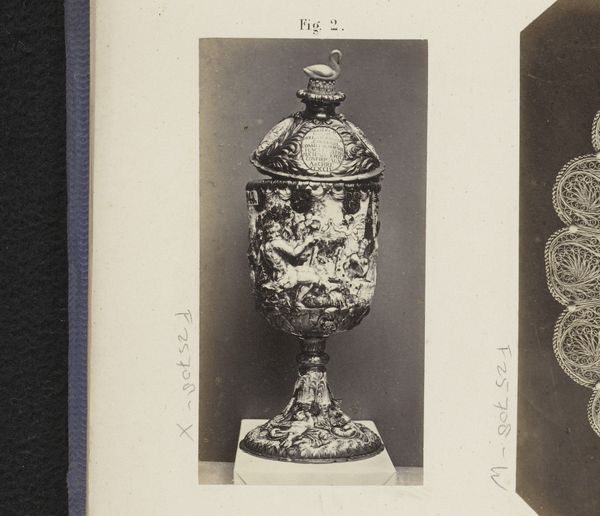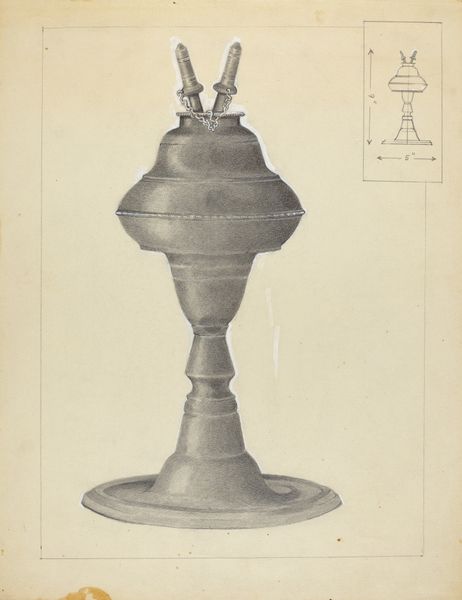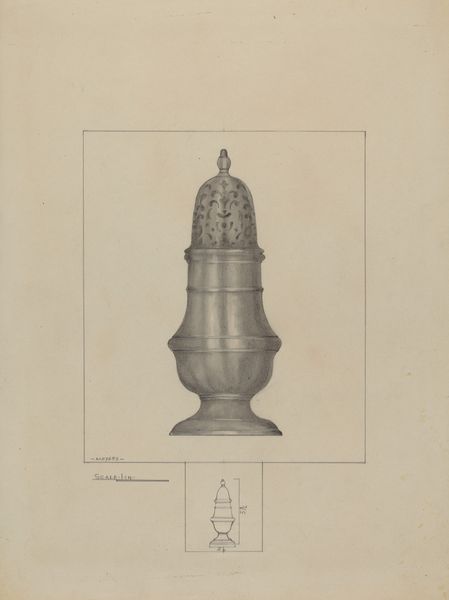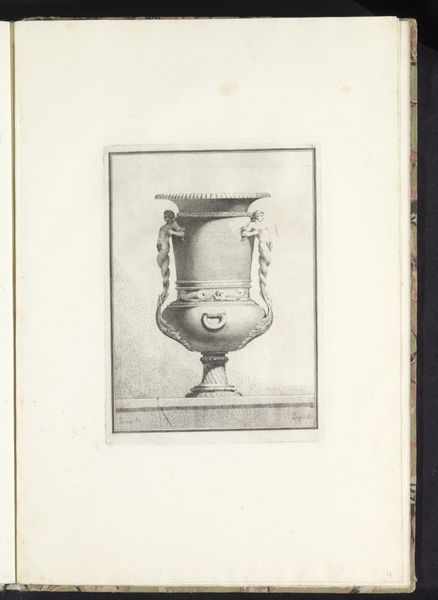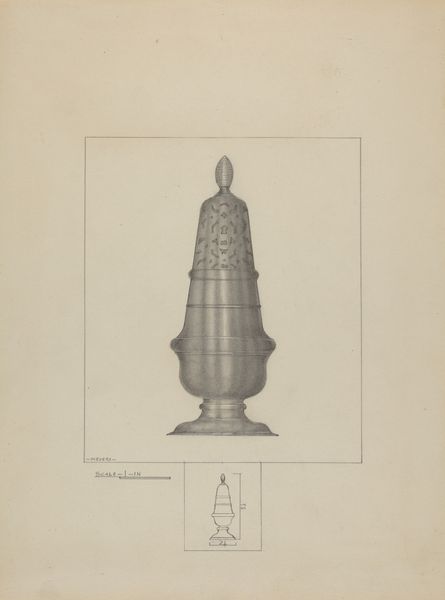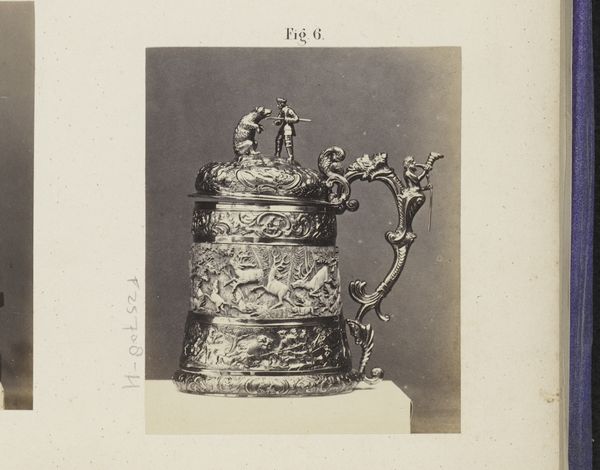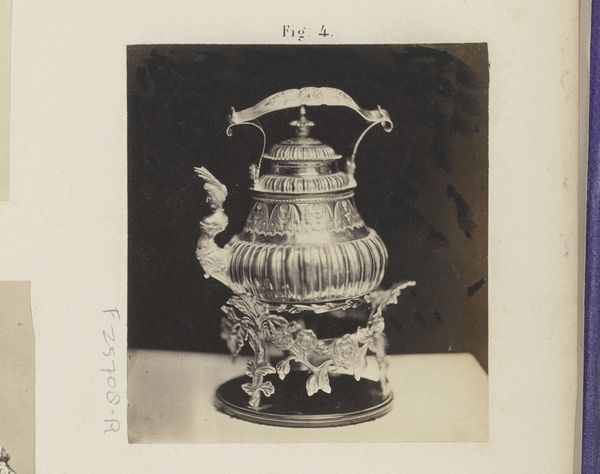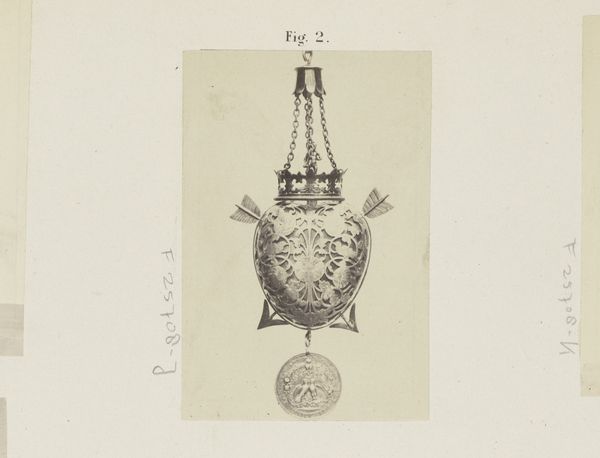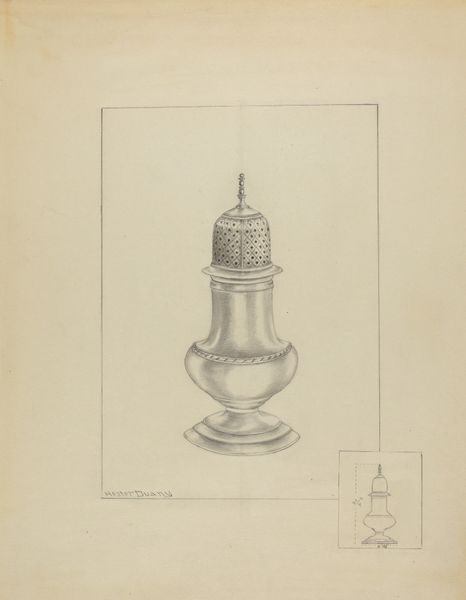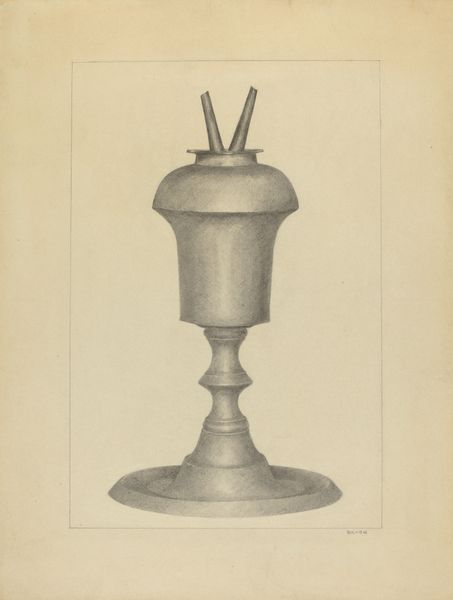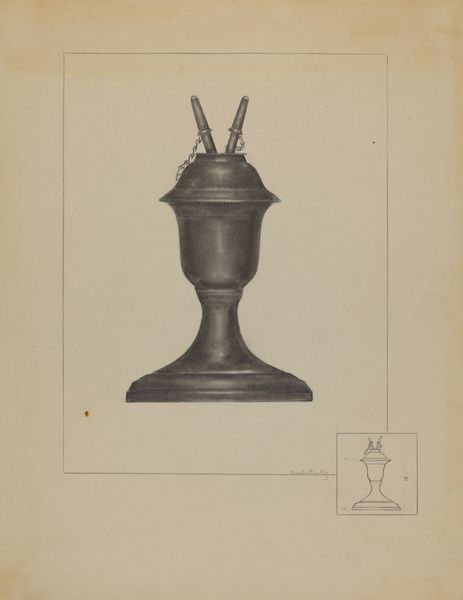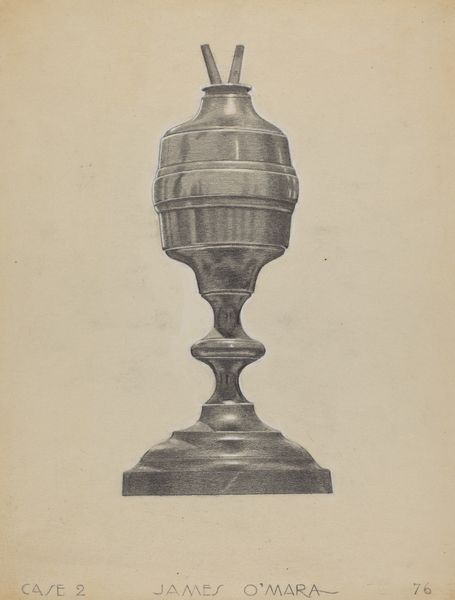
Gouden bokaal van de Dijkagie van Voorne op de Tentoonstelling van oudheden in Delft before 1863
0:00
0:00
print, etching, engraving
# print
#
etching
#
history-painting
#
decorative-art
#
engraving
Dimensions: height 90 mm, width 58 mm, height 236 mm, width 321 mm
Copyright: Rijks Museum: Open Domain
Curator: What strikes me immediately about this image is the air of solemnity it projects—almost like a still life portrait of power. The elaborate detailing and the object's pronounced verticality communicate a sense of formal authority, steeped in tradition. Editor: Indeed. We're looking at a print titled "Gouden bokaal van de Dijkagie van Voorne op de Tentoonstelling van oudheden in Delft," dating back to before 1863, by A.L. Oversluijs. This detailed engraving captures a gilded goblet displayed at an antiquities exhibition, offering a glimpse into 19th-century perspectives on historical artifacts. It compels one to question whose history and whose antiquities were being elevated. Curator: Considering the social role of "Dijkagie", water management, the craftsmanship of this piece goes beyond mere aesthetics. We see the embodiment of resources, skilled labour and also power—a symbol for an organization deeply enmeshed in controlling vital infrastructures and dictating the lives intertwined with these structures. Editor: Absolutely, it emphasizes the relationship between land control and material display. The vessel is clearly designed to impress with its overt ornamentation: each layer seems to amplify the sense of prosperity, celebrating the visible outcomes of well-managed production chains and, implicitly, control over their dependent labor force. Curator: Looking closer, the repetitive patterns almost seem to mimic social stratifications or hierarchies that dictated the access and distribution of wealth and influence within the communities governed by water management policies. What implications can we draw regarding the status of women in relation to those guilds and social functions portrayed on the golden cup? Editor: Those questions certainly lead to fertile critical ground, prompting further examination of gender dynamics in artisanal guilds and socioeconomic influence. Focusing on material production and presentation gives crucial insights for decoding deeper messages about power, status, and perhaps overlooked human experiences attached to these "golden" achievements. Curator: A deeper inspection indeed requires acknowledging the interwoven threads of class, governance, gender and representation at play in Oversluijs' depiction. Editor: Yes. By anchoring the artwork firmly to socio-historical interpretation, this "golden goblet" ceases to be an aesthetic objet d'art and evolves into an invaluable gateway for dialogues exploring themes relevant to identity and representation across epochs.
Comments
No comments
Be the first to comment and join the conversation on the ultimate creative platform.
